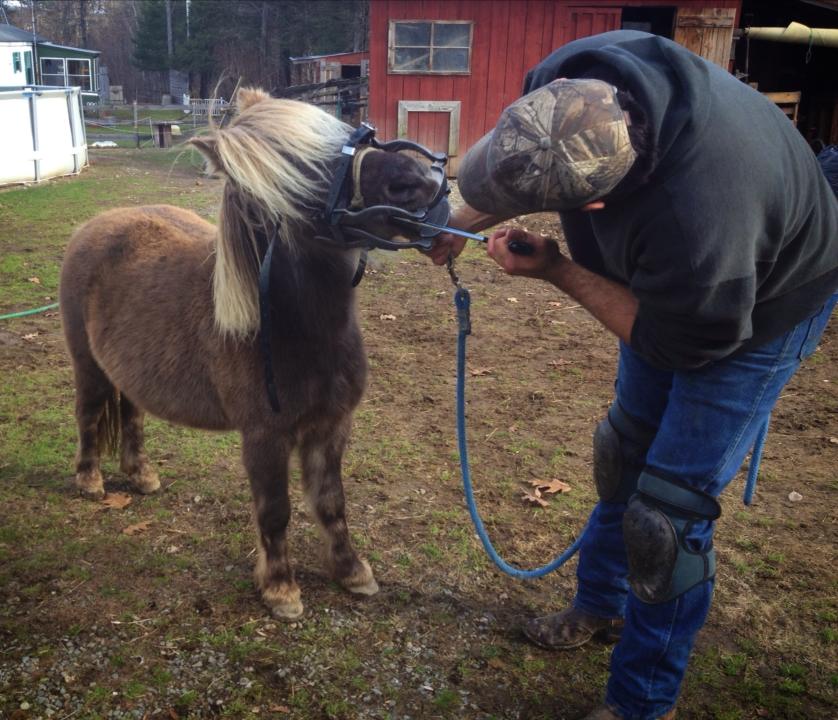

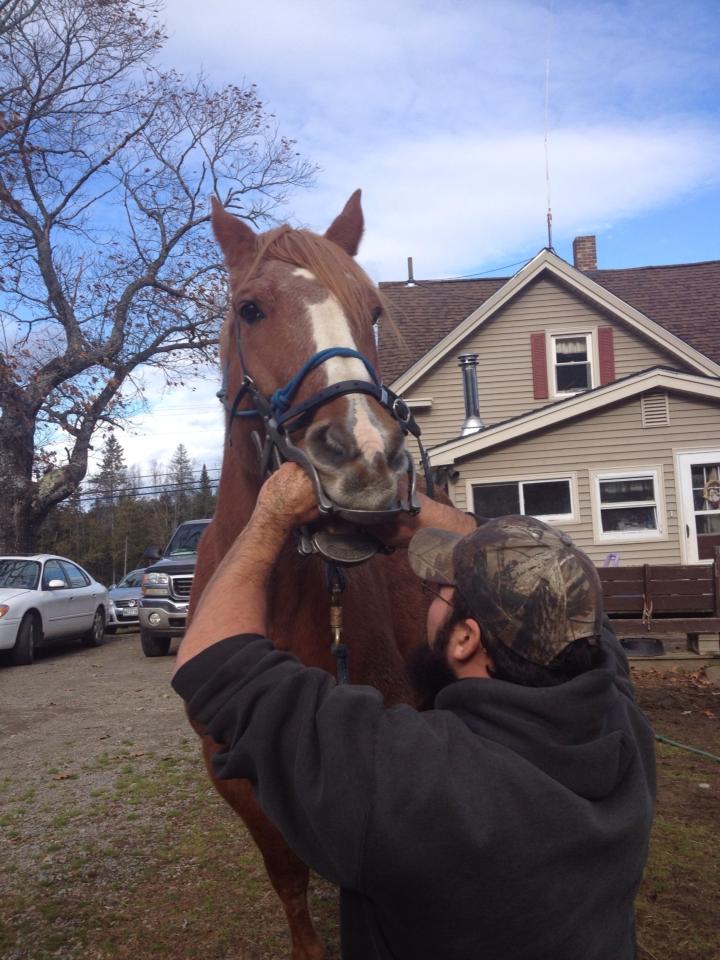
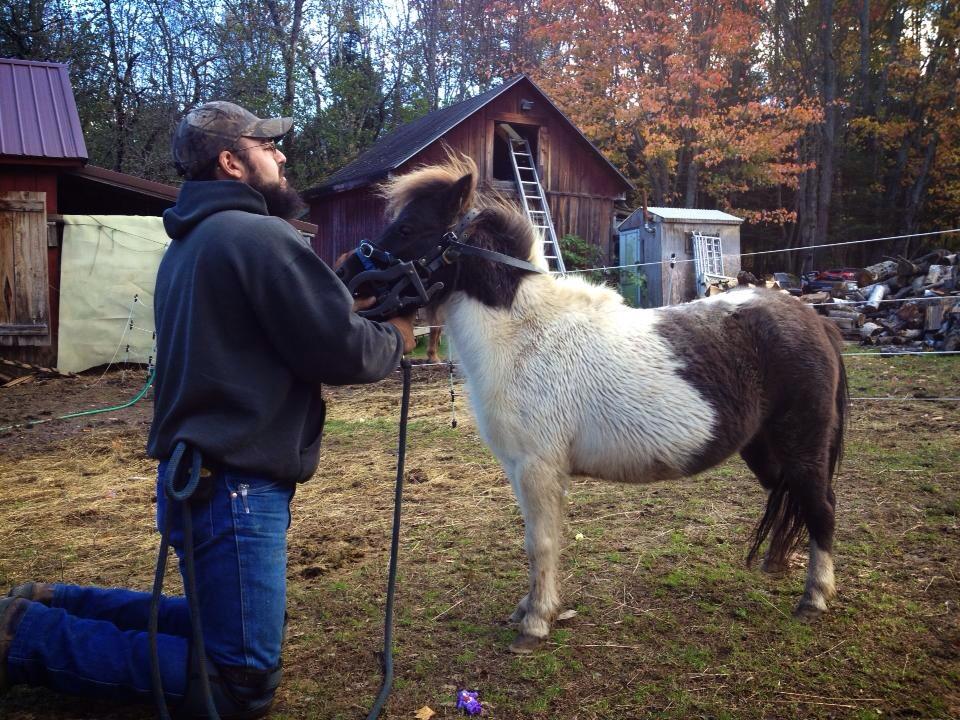
Frank and Raine




Frank and Raine

Dae Soon’s first meeting with Frank
The common perception of equine dentistry is that horse’s teeth need to be filed so that they can eat hay, grass and grains efficiently and to remove sharp hooks and ridges. While all of this is most certainly true, much more lies in the balance of the horse’s jaw.
Mastication – chewing, that is – not only pulverizes the food into particle sizes needed for proper digestion, the action in combination with the correct level of pressure in the mouth is the major signal to the body to produce saliva. Saliva is the second step of digestion, the one following ingestion/chewing and preceding breakdown by acids in the stomach for release of calories and nutrients. Many vitamins and minerals are better absorbed in the esophagus pre-acidification and the proper amount and pH of the saliva is key to releasing these from the feedstuff. Saliva is furthermore of paramount importance in keeping the digestive tract lubricated. There is no horse owner that does not have a healthy respect, bordering on fear, of colic.
The most common cause of fatal colic in horses is an impaction. The food or foreign body becomes “stuck” in the intestinal tract and adheres to the wall of the gut, causing tissues to die and/or total blockage. Dehydration is a known villain, leaving the horse’s digestive system ripe for this failure. The link that is often missing is that the gut needs to remain lubricated by saliva, not simply fluids travelling by osmotic balance. Of course, Horse Maintenance 101 tells us to keep that water available at all times, monitored and doled out in portions to a hot or sweaty horse. This is the most important health consideration there is; however, proper digestive utilization of this water depends on long term salivary health.
Older horses losing teeth and suffering compromised jaw motion often require creative methods of hydration to keep them going, e.g. soaking feeds to pre-wet them and sometimes even IV support. Competition horses can also become quite prone to impaction if their jaw motion is compromised during competition, such as having the mouth tied shut with a flash or tight noseband. Dental balancing of the motion of the mouth, from the incisors (front teeth) through the back of the jaw is necessary to help the horse maintain their perfect chewing motion, thus stimulating all of the salivary glands equally, with none receiving too little pressure as not to produce, or too much as to become inflamed and the ducts close and become painful. Overproduction of saliva is possible by excess pressure of even as little as one tooth, which can also cause dehydration and lead to colic.
The next major cause of colic with dental implication is gas colic. The function of the digestive system is dependent on a delicate balance of very harsh acids that must stay where they are needed, and muscles to move the food slowly, ever onward as well as super porous, delicate stomach lining to allow all of the nutrition available from the food to pass into the bloodstream and be used. The saliva, as mentioned above, provides much-needed lubrication to this process. It also starts digesting the food matter with a cocktail of enzymes, as well as premixing the food to a pH that will aid in breakdown by the acids of the stomach. If the enzymes are not present in the saliva, due to less than healthy salivary output or a pH that will not support them, the stomach is presented with unprepared food. This would be similar to food that is unchewed as well. Please note at this time that in an herbivore that is unable to regurgitate (throw up) their food this is a very serious problem; far more serious than say a cat or dog now chewing properly, as their digestive make up is much more elastic and forgiving. The stomach may have enough acid to cope with the unprepared food somewhat and it will do its best to extract from the food what it can, but peristalsis marches ever forward, carrying the food out of the acid chamber into the intestine. If the stomach was struggling with unprepared food, often the partially digested food will cause discomfort as it heads into the very delicate tissue of the small intestine. This causes symptoms visible to most horse owners of pain and distress. Internally the horse is experiencing gas and may also be having breakdown on a cellular level, causing the wall of the lining of the stomach to ulcer. While there are admittedly many causes of ulcers in horses, stress being high on the list, pH imbalance in the gut is a very common one. Gas in the intestine can lead to such pain and distress that it is often thought to cause the horse to roll violently and create a torsion, or “twist” colic.
While there are times that we cannot achieve balance in the mouth to sustain ideal saliva, as in older or injured horses, it is one of the basic necessities we are meeting by performing a comprehensive routine dentistry. The mouth is the gateway to digestion and its importance is not all in the mechanics of chewing. For therapies to aid in the digestive process for older or compromised horses, please see our article, complete with feed and probiotic recommendations, The Aged and/or Compromised Horse.
Most of us are no stranger to dental pain. From a routine cavity and the nerve sensitivity that brings to holding an inconsolable infant who is cutting teeth and just needs to scream to those of us who had braces as a teen and the jaw moved too quickly and we ended up with clicking, swelling and the pain of a mis-aligned TMJ. Even the smallest ulceration or sore in our mouth can create a pain that we find inescapable throughout the day and night, causing us to lose sleep, have trouble eating and experience discomfort in all of our day to day tasks. Being verbal, thinking humans with opposable thumbs, we call the dentist’s office and head in for quick intervention, while applying a bit of Oragel in the meantime.

For horses, the problem of dental pain can be a startlingly similar experience with a far different outcome. The horse with dental pain cannot verbalize to their human caretaker; nor do most owners have a speculum or the wherewithal to check the horse’s dental status on a regular basis. Expressions of dental pain can manifest in so many symptoms, that it is of great value to any training or riding program to be well acquainted with these clues, as many of them can appear as training issues or neurological disorders, often going mis-diagnosed or causing frustration for both the horse and rider during exercise.
While horse and human dental anatomy is very different, the nerve bundles that affect the anatomy and the body’s expression of those pains are often similar. The pain of ulcers (open sores in the mouth) is fairly universal causing the horse to feel pain at all times as well as sensitivity during eating and right after. There may also be pain when the horse is bitted and asked to move in a direction that places pressure on the sore spot; sometimes even a cheekpiece lying on the area will cause pain. This could be expressed by a stiff neck, hesitancy to pick up a lead, balking (sucking back), reluctance to jump, head tossing or general depression. The ulcers may be caused by sharp tooth edges or hooks and will not resolve until these can be taken care of. Meanwhile, the owner or trainer may become frustrated with the horse’s new “attitude” and become more aggressive in their riding or routine. These misunderstandings are entirely unintentional, but again, still cause pain and frustration.
Dental problems that include mis-alignment of the Temporomandibular Joint (TMJ), the Cranio Sacral Joint or synovial sac surrounding it may cause subtle but farther reaching symptoms that can lead to veterinary involvement. TMJ pain can cause head shaking and swinging so violent that it appears to be wobbler or other neurological disorder, or could be subtle enough to be the horse that always leans on your right leg and takes that lead predominantly when landing a jump. With TMJ swelling, the jaw can no longer “float” to maintain necessary alignment as the head changes position vertically or horizontally; this causes opposing muscle mass to form in an attempt to take pressure off that joint and will often lead to the horse having prominent forehead muscles or atrophied muscles around the eyes. The problems in attempting to comfortably bit or ride this horse softly in collection are almost too numerous to think of.
The TMJ is also very significant to the posture of the pelvis, this can be exhibited easily my clenching your own jaw and exploring the range of motion you have in your different body parts. Put your favorite yoga video on and try to do the moves with your jaw clenched. Feel what that does to you neck, spine and balance. Specifically in the horse, the spine in front of the pelvis will hollow and heat will likely be noticeable over the sacro iliac joint. This is a common strain area for performance horses and often called a “jumper’s bump”. As with any inflammation left too long, calcification will form at the joint and bone will encroach on the joint space. This occurrence in the TMJ is an unfortunate thing to see as it means the horse from this point forward will have a very hard time finding comfort chewing or being ridden.
Symptoms of Cranio Sacral Joint pain that come from chronic mis-alignment or injury to the head can often be termed as neurological. Stumbling, seeming to not know where the hind feet are, not tracking up, persistent stiffness, tail held to one side, total spinal sensitivity (cold back), girthing issues, can all be symptoms. EPM or Lyme Disease may be suspected and tested for. There may be swelling under the jaw area that suggests low level viral activity. If these symptoms appear in your horse, it is well worth the time to look in the mouth. Cranio Sacral issues usually require dentistry, soft tissue therapy (chiropractic and or acupuncture) and rest.
I can confidently say that not one person who would venture to read this article is not interested in being the utmost advocate for their horse’s health out of love and respect for their animal. If there is a change in your horse it is far better to rule out pain and fear every time before proceeding with a new training method or other change. Many of the problems that are mentioned above come from feeding practices, salt blocks, hay feeders and limited grazing. Over-processed, sugary feeds are also often to blame. Horses should eat forage at ground level, graze as much as they can, play with buddies as often as possible, eat as little grain and concentrates as will maintain them and have access to loose natural (not white) salt at all times.
As our horse friends age, many of the changes we see have to do with their comfort and condition. Topline can melt away, leaving the spine visible, muscle becomes looser and harder to maintain and often we notice real changes in the ability to eat. It may take longer. Food may dribble from the mouth, or hay may be chewed and dropped or chewed and stored in the cheek creating a pocket. Older horses suffer from dehydration in both cold and heat more intensely. Many of these problems are due to digestion, a process that begins in the mouth. We do not discount for a moment the loss of gut permeability that occurs over time, making it harder for adsorption and absorption of minerals, fats and carbohydrates. This is very real, but the presentation of foodstuffs and the type of feed are two factors we can control and can make many years difference to the life of our elderly companions.
Horses are born with a given amount of tooth that will continue to erupt over the lifespan of the horse. Many factors contribute to how much tooth erupts every year, ideally slightly less than 1/8th of an inch per annum. Horses that have been powerfloated or had too much tooth taken away yearly can begin to lose teeth as early as 13 years of age. Horses with excellent care will often begin to lose teeth in their mid-twenties. Horses that have had very little dentistry and large pathologies/imbalances will also tend to lose teeth early, but often have had so little jaw movement for so long, their condition has been poor for an extended period of time already.
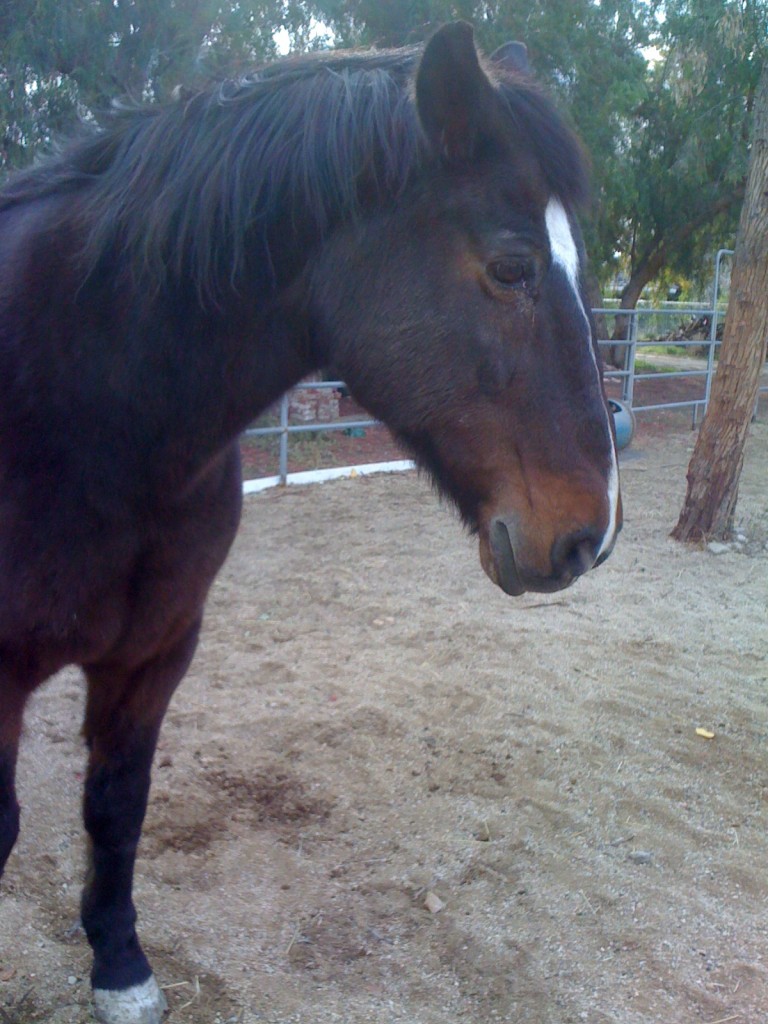
The term “long in the tooth” used to describe advanced age comes from the observation of older horses to have long and sloping forward incisors (front teeth). While this may be the case in many older horses, proper care of the incisors over time show us that 25-year-old horses can have the same angle and appearance as 6-year-olds as long as attention is paid to this area.
Your dentistry, whomever your dentist is, should always start here, as the incisors are the beginning of the mouth and bite. It is not possible to adjust the horse’s dental table until the incisors are aligned. If the dentists attempts to begin with the molars or ignores the incisors completely (very common) the dentistry was not successful. Dentistry on horses over 20 must be done with consideration to the fact that the horse has very little tooth left. As little as one session of overdone work with an older horse can leave them with less than half the teeth they had in their mouth by the next year!
Losing teeth is inevitable, and irreversible, but the damage can be managed. One of the biggest problems with a horse missing a tooth is that the opposing tooth (if it were a top tooth, the tooth right below it or vice versa) with grow out into the socket of the missing tooth. That opposing tooth, in only a few months, will lock the jaw up due to a lack of counter pressure from the missing tooth. The good news is, the overgrowing tooth will grow itself out and fall out as well in a year or two; however, twice yearly or more maintenance of the overgrowing tooth is necessary or chewing becomes nearly impossible. Most owners aware of the situation are able to call Frank and tell him the horse lost 50 pounds in the last 2 weeks, and sure enough, that lonely tooth has snuck up into the empty socket again. Filed back down, it releases the jaw back into motion so the horse may use its remaining teeth.
Feeding the elderly horse is another challenge. There are many feeds on the market today that offer palatability and miracle weight gain to the older horse. They are all Twinkies for horses, every one. They are high fat, requiring huge amounts of toxic preservatives, and high sugar; causing much of the insulin resistance we see today. If the bag says Senior Feed, run away. If it has beet pulp or rice bran, run away. Older horses do not have as highly functioning a gut or salivary glands as their younger counterparts and require less ingredients in their diet, not more. Simplify. Make sure the food is palatable – this means soaking. Try for no more than 5 ingredients in the food. If you read a feed bag, there will be more than 40, maybe 10 protein sources or more, and the older gut cannot process this barrage.
What to feed? Start with an excellent hay pellet or cube, pellets are amazing in the winter as they soak in less than five minutes. Timothy hay pellets are great for any horse; timothy alfalfa are fine for horses that need more topline and have no arthritis or kidney sensitivities. Start with two to three pounds of pellets daily and work up from there. Your horse should always have access to good hay or pasture, something to munch on even if it is just falling out of the mouth. The act of chewing keeps them happy and helps the gut maintain motility. If 3-5 pounds of pellets or cubes keeps all the weight on, that is great! If you need to add more calories, steam rolled barley, crimped or ground oats, non-gmo cracked or ground corn, non-gmo roasted soybeans can be added, a quarter pound at a time until the weight looks good. Put the grains in the bucket with the pellets and soak it all together. This limits the amount of protein being put in the gut at one time and makes digestion far easier, causing less movement in the blood sugar. It has the added bonus of being wet and adding hydration to the body and creating much less of a chance for the food to stick to the wall of a dry intestine and cause colic.
Due to some loss of pressure in the aged equine’s mouth, it is wise to help the stomach maintain pH that may fluctuate due to the loss of enzymes in the saliva. Our very best suggestion is raw apple cider vinegar. It has many benefits to all horses but is beyond helpful for the elderly. Adding one cup a day to the horse’s food will ensure B vitamins as well as help potassium balance, mitigate allergies and keep the stomach at a fit pH to digest. Raw apple cider vinegar is unfiltered with the “mother” brown flaky stuff floating around in it. It is available in the health food sections of most stores. To cut costs, we recommend buying 2-3 gallons of regular, pasteurized apple cider vinegar and adding a quart of raw to this in a large bucket. Leave the bucket of vinegar in a place above 50 degrees and the raw vinegar will inoculate the rest and leave you with gallons ready to feed in about 3 weeks. Just keep the process going (2 buckets needed) and you will have a very economical probiotic gut helper available at all times. When dehydration is a worry, add a ¼ cup of blackstrap molasses to the cup of apple cider vinegar you are feeding and you have given your horse a wonderful mix of quickly absorbed minerals to help keep the moisture plumped up. This is in no way similar to the added molasses in Senior Feed as that molasses is tainted with preservatives and added at a much higher rate, usually cut with more than half high fructose corn syrup. If you have more questions regarding feeding and nutrition please let Frank know as his partner is a nutritionist and happy to help you find the right diet for your horse.
While power tools are the standard of care for humans and this makes us very comfortable with them, they are not appropriate for horses. Humans have a different jaw motion, do not have teeth that erupt over their lifetime, can be spoken to and sit in a chair under sedation with very good access and visibility. Humans are having rotten areas debrided (drilled out) and filled, horses are having what should be angled, flat grinding panels maintained. While people feel that power tools are a sign of an expensive, cutting-edge dentist, they are not only not necessary, but highly detrimental in anything but anesthetized, periodontal work done in a hospital.
The hand tools used by many dentists today would be recognizable to dentists 100 years ago. There have been modifications to the cutting blades using materials that provide a smoother, faster cut, as well as modifications to the handles to allow for more accurate angles and less stress on the horse’s jaw and the dentist’s wrist and hands. That being said, many Amish today use the same tools that have been passed down to them in the family for generations, replacing or sharpening the cutting surfaces.
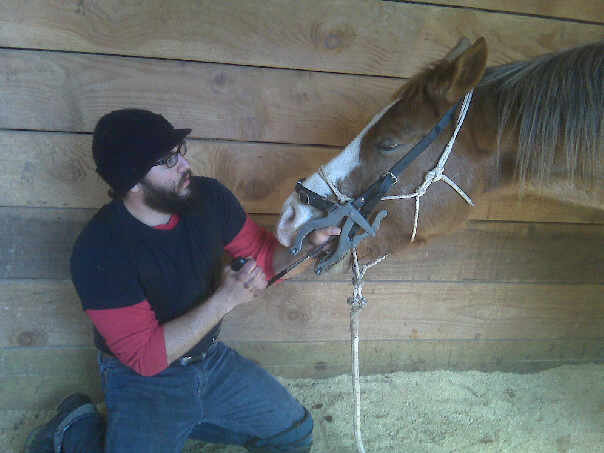
A few reasons to avoid the use of power tools in the horse’s mouth: